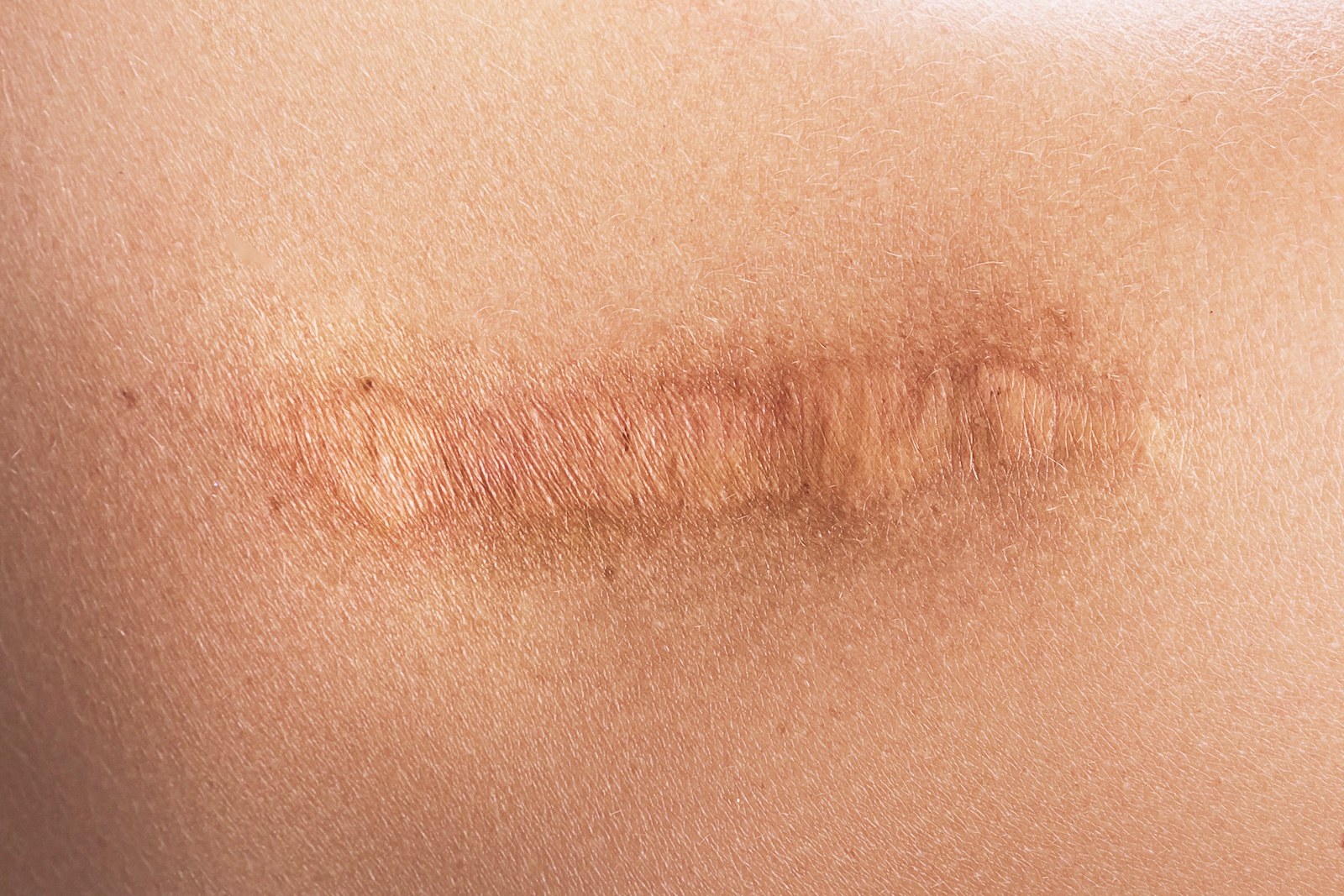
Spinal fusion surgery can be a lifeline for patients who live with back pain. It is an opportunity for them to heal and resume their favorite activities that were previously too painful to enjoy. However, some patients may experience pain following the operation that doesn’t subside or actively gets worse.
Dr. Todd H. Lanman, an award-winning spinal neurosurgeon with over 30 years of experience, often meets with patients who still live with pain after their spinal fusion surgery, advising them on their options to restore their comfort levels. Here’s how he identifies excessive pain and what he advises patients to do so they can heal properly.
Normal Healing Discomfort vs. Excessive Pain After Spinal Fusion
Spinal fusion is considered major surgery and your body needs time to heal after the operation. The days following your spinal fusion can be painful and your doctor should give you post-operative care instructions to mitigate pain. These might include medication, resting, and limiting how much you lift and move. If you follow these instructions, your pain levels should lessen within a few days. You should be able to resume normal activities within a few weeks.
It’s normal for pain levels to decrease over time as your body heals from surgery. Your incision site should heal, eliminating sensitivity in that area. Your back should also feel less sensitive and painful over time as your body gets used to the spinal fusion.
If your pain levels don’t go away, or even worsen, it could be a sign that there are complications from the surgery. You should also be aware of new forms of pain that you never experienced before the procedure. For example, if your incision site doesn’t heal correctly, it could get infected. This will make the area inflamed, sensitive, and painful. If you experience throbbing pain in your back or sudden pangs where the fusion occurred, you might not be experiencing normal healing discomfort.
Signs and Symptoms of Excessive Pain
Once your doctor approves you to leave the hospital or health clinic and heal at home, you will need to look out for symptoms of excessive pain and warning signs that your body isn’t healing as it should. Here are a few things to look out for that indicate something is wrong with your body.
- Sudden and severe increase in pain levels: you may experience different types of pain from before your operation. This pain could come on suddenly, reach unbearable levels, or prevent you from getting comfortable.
- Unusual sensations or numbness in the limbs: spinal fusion operations occur near the nerve canal. You may experience symptoms of nerve damage from the procedure.
- Fever, chills, or signs of infection: if your body develops an infection, your immune system will try to fight it with a fever. This is a sign that something is harming your body.
- Abnormal swelling or bruising: swelling is another way that your body fights infection. Look for sensitivity or bruising near the incision site.
- Changes in bowel or bladder function: this is another sign of nerve damage. The nerves that control your bowel function could have been harmed during the procedure.
- Persistent weakness or inability to move: it’s natural to feel tired after surgery, but excessive fatigue is a warning sign that something is wrong with your body.
You may experience one or multiple symptoms during this time. Make a note of any symptoms you develop during the healing process so you can alert your doctor to their presence. These issues, along with excessive pain, can provide clues as to the source of the problem.
When to Seek Medical Attention
If you experience any of the symptoms mentioned above, talk to your healthcare provider and explain what you are feeling. While some pain is normal during the healing process, it should not be excessive and should not come with other unwanted symptoms. It is better to talk to your doctor and learn that your pain is normal than to live with severe discomfort as your symptoms get worse. Here’s why you should seek medical attention.
Recognizing the Importance of Timely Communication with Healthcare Providers
Open communication with healthcare providers is crucial during the recovery phase. While your doctor should check in on your healing process, you should not wait for your doctor or care team to contact you to report excessive pain or other unwanted symptoms.
Pain is your body’s way of warning you that something is wrong. Many of the other symptoms discussed are also natural immune responses to threats in the body. If your pain is getting worse or is unusual, listen to your body. There could be something wrong that is preventing your spine from healing properly. This means the pain could get even worse if left unaddressed.
In the days following your spinal fusion operation, consider keeping a pain diary. Record the intensity, location, and duration of pain, along with any other symptoms you experience. Document what brings on the pain – like movement or lifting – if you can identify a cause. These notes will help your doctor discover patterns and understand what the issue could be.
Contacting Your Spine Surgeon for Concerns About Post-Fusion Pain
It’s better to reach out to your doctor even if you think your pain is normal. What you consider a normal part of the healing process could be a significant concern for your spinal surgeon. They might be able to identify early warning signs and intervene before your pain becomes worse or new symptoms form.
Spinal surgeons are well-equipped to assess post-surgical pain issues. Even if there isn’t a significant concern to address, they might recommend changes to your recovery plan to make you more comfortable. For example, they might adjust your pain medication or write a prescription to address inflammation.
This communication can also protect you from future injuries. If your doctor knows you are still healing, they won’t approve you to return to work or clear you to participate in activities that could hurt your spine.
The Role of Imaging and Diagnostic Tests in Evaluating Complications
If you experience excessive pain following spinal fusion, your doctor might order a few imaging tests to look at your affected vertebrae. This will provide them with a clear picture of your spine that cannot be viewed through a physical examination. They might complete one or more diagnostic tests like X-rays, MRIs, and CT scans to identify post-operative issues.
These tests look at your bones, soft tissue, and nerves to see which parts of your body are affected and in pain. With a clear picture of your spine, your doctor can recommend a treatment plan to reduce your pain levels.
If you continue to live with pain because of your spinal fusion operation, contact Dr. Lanman. Whether you had a recent operation or received your spinal fusion years ago, he can look at your spine through these diagnostic tests. Dr. Lanman will review a few potential solutions that can improve your spinal health and reduce your pain levels. From there, you can move forward with his treatment plan.
Expert Solutions: How Dr. Todd Lanman Can Assist You
When you meet with Dr. Lanman, tell him about your history of back pain and how you continue to experience discomfort following your spinal fusion. You can also show him your pain diary if you keep one. Dr. Lanman frequently meets with people who have failed spinal fusions or continue to experience complications years after the procedure. Modern advances in spinal neurosurgery are helping patients eliminate their back pain, for good. When you consult with Dr. Lanman, he will look at your unique case to make a customized recommendation designed to reduce your discomfort while protecting your spine.
Scheduling a consultation with Dr. Lanman is also beneficial if you need spinal fusion but want to avoid excessive pain. He might recommend better alternatives that are less invasive and provide better solutions. For example, artificial disc replacement (ADR) is increasingly used instead of fusion to treat back pain. You could be a candidate for this operation that preserves your range of motion and comes with a reduced risk of postoperative complications.
Request a Consultation With Dr. Lanman Today
Your pain is valid, whether you are experiencing excessive levels of discomfort or are worried about the healing process. You deserve the support of a spinal surgeon who will listen to your concerns and help you heal effectively. An experienced neurosurgeon will also recommend the best possible treatment options to reduce the risk that you live with pain. Dr. Lanman is a leader in his field. He does his best to support patients by using the latest technology and advanced procedures that drive quality results. Each of his treatment plans is tailored to the needs of patients, which means everyone who meets with him receives individualized care.
Meet with Hollywood’s go-to spinal neurosurgeon with over 30 years of experience, including 20 years as an associate clinical professor at UCLA. Request a consultation with Dr. Lanman and learn how he can treat your back pain, so you can get back to living your life, pain-free.
FAQs
What can I do to manage normal post-operative pain?
Your surgeon will give you instructions for pain management after your operation. They will likely ask you to rest, avoid lifting heavy objects, and take medication for both pain and inflammation. If you follow these instructions, your pain levels should decrease after the procedure.
What role can another world-class spine surgeon play in my recovery?
Seeking a second opinion from a world-class surgeon can help you better understand your condition and options. You might learn about different treatment plans or operations that are more effective in helping you recover. This surgeon can also identify whether the fusion was a success or if complications are preventing you from healing.
What are some common causes of pain after spinal fusion that are generally not a cause for concern?
Pain is a normal part of the healing process. You should expect sensitivity at the incision site while it heals and general soreness in your spine. These are not causes for concern if the pain is stable and lessons over time. This means your body is recovering from the operation.
Why is artificial disc replacement better than spinal fusion for pain?
Artificial disc replacement (ADR) is an alternative option that preserves your range of motion. When you heal, you should be able to bend, twist, and move like you did before you had back pain. ADR is also less invasive, only requiring a one-inch incision in most cases, which means you should heal faster.
Can excessive pain lead to long-term complications or affect the success of the spinal fusion?
Excessive pain is usually a warning sign that something is wrong with the spinal fusion operation. While the pain itself might not lead to complications, it is your body’s way of communicating problems that could mean the fusion wasn’t successful for your condition.
Ready to reclaim your life? Get in touch with Dr. Lanman Today.
FOLLOW US ON SOCIAL MEDIA | @ADRSPINE




